(Bivona Ant. in Bivona And., 1838)
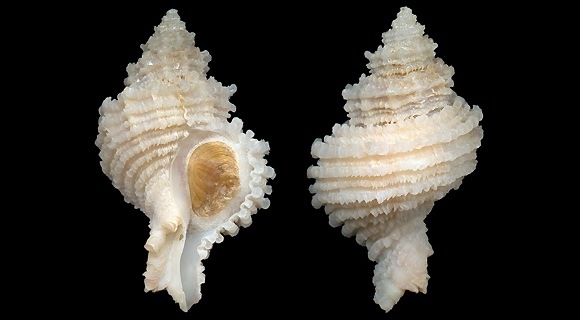
Basionym: Fusus squamosus. Synonyms: alucoides, lamellosus, lintoni, ruderatus, squamulosus…
90-100m deep, Málaga, Andalucia, S. Spain. 35mm.
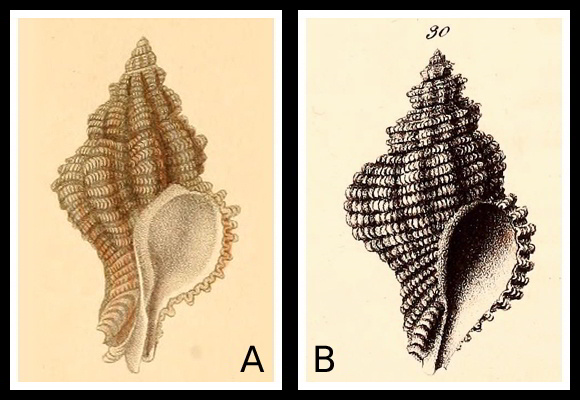
« Shell subumbilicate, white, turrito-fusiform, with a large, subtruncate, jagged, lamellose anterior end; whorls 8, smooth at embryonal part, the others sharply carinate, radially costulated, spirally lirate, flattened above the carina; the latter compressed, undulating, subdentate, slightly sloping at the edge; body whorl much higher than the spire, adorned with 9-10 radial costae and increasing decussate spiral furrows; aperture subovate; labial margin internally plicate; columella subvertical, slightly arcuate; umbilicus small, irregularly folded and lamellose externally, with diverging canal; anterior siphonal canal somewhat curved. » – P. Fischer: “Diagnoses d’espèces nouvelles de mollusques recueillis dans le cours des expéditions scientifiques de l’aviso ‘Le Travailleur’ (1880 et 1881)”, Journal de Conchyliologie vol.XXX, Paris 1882, p.274 (Pseudomurex perfectus).
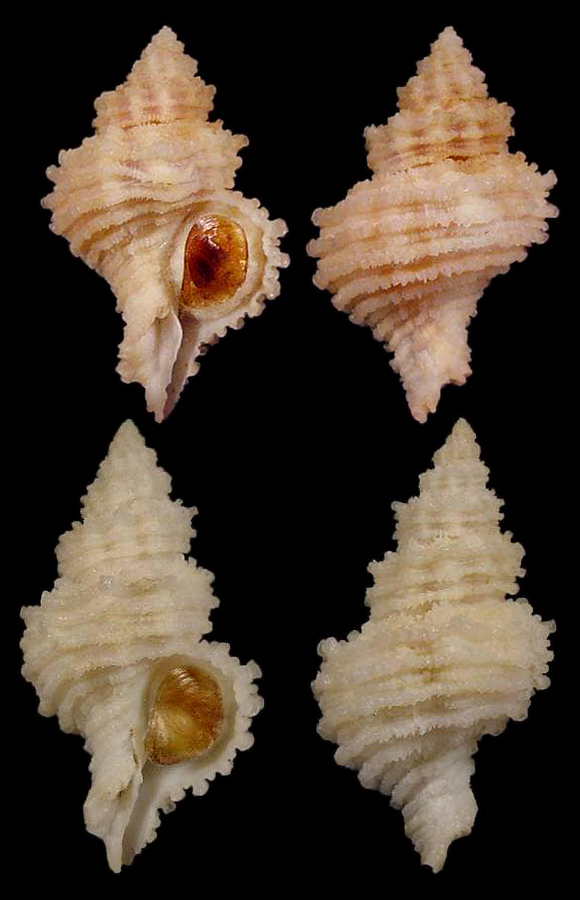
Original pictures provided by D. Gubbioli (ES).
– (CC BY-NC-SA) –
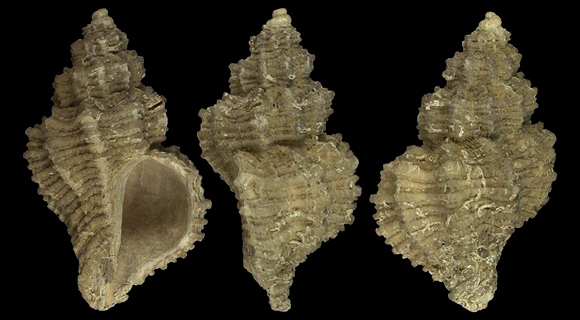
– (CC Ø) –
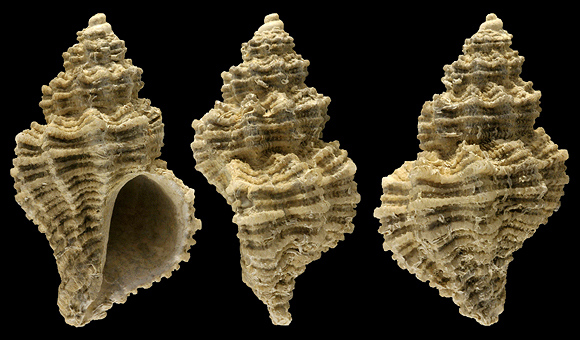
Original pictures provided by W. Larrimore, Smithsonian Institution, for gbif.org – (CC Ø).
These two pictures show the holotypes of lintoni, described by Verrill & Smith in their “Notice of the remarkable Marine Fauna occupying the outer banks off the Southern Coast of New England, No. 7, and some additions to the Fauna of Vineyard Sound”, The American Journal of Science ser. 3, vol. 24 (143), New Haven 1882, p.365 (footnote): « Shell stout, rough, with six very convex, somewhat shouldered whorls, crossed by about nine very prominent, thick, obtuse ribs; whole surface covered with strong, elevated, obtuse, scaly, revolving cinguli, usually alternately larger and smaller, separated by narrow, deep grooves; they are crossed by arched scales or lines of growth. Aperture broad; canal short, narrow, a little curved; umbilical pit distinct, but small. »